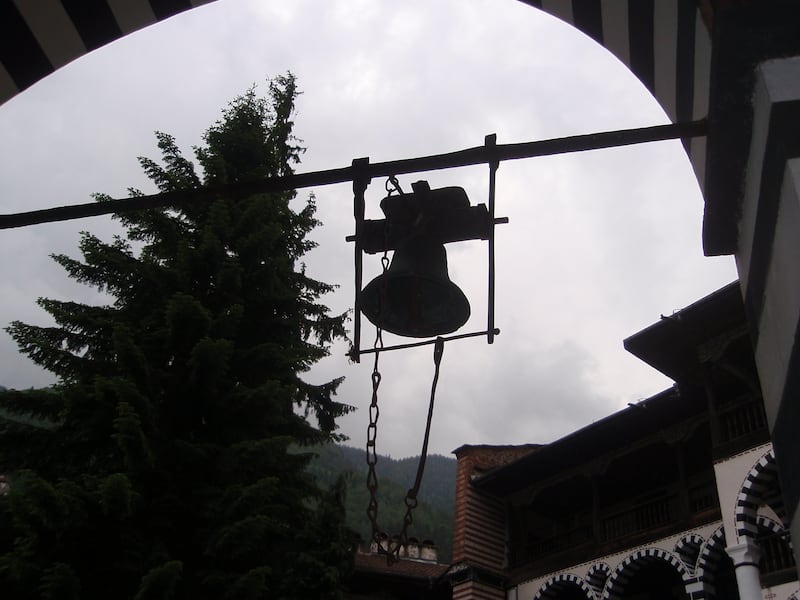My wife and I are building a new home. The outside of the home has a number of stone columns. They are large and require significant skill to put the puzzle together. Several things must occur to make it right.
First, a wire and scratch coat must be put on for the stone to stick. Then the stone needs to be cut and put together perfectly. Then there is mortar put between each joint, squeezed in with a bag. The mortar needs to be the right mixture to stick, provide support and be the exact color contrast to make the stonework pop. Outside temperatures need to be within certain parameters for best results.
I thought of how shaping a world of peace is like the stonework I’m witnessing by two meticulous stone masons. We need to start with basic routines and lay the groundwork for our efforts. This process is only the beginning. If we left our work there, our peace would be fleeting. Then we add to our routines and rhythms, stone by stone — each one different but adding value to the whole. Each stone must serve a purpose and build on another. Customization is the key. Then we review the patterns over and over, like putting mortar in the spaces, to make it long lasting and beautiful.
In building these patterns, routines and rhythms of peace, the timing is important. Previously, I’ve written about the phases of life and how they apply to the intentional shaping of our lives. Monks practice this daily. In the monastic world, when a bell rings, the monks drop everything they are doing to do whatever comes next. Managing our time — being intentional about what we do with it — means everything. In distinct phases of our lives, we should listen for the monastic bell.
While raising children, time is seldom our own, and we put our own needs in second place as we serve our children at each sound of the bell. This space with our children is our own domestic monastery. Doing whatever it is “time to do” is paramount to achieving purpose and peace.
While raising children, time is seldom our own, and we put our own needs in second place as we serve our children at each sound of the bell. This space with our children is our own domestic monastery. Doing whatever it is “time to do” is paramount to achieving purpose and peace.
Perhaps we have a time each day when our monastic bell rings and we drop everything; for example, to enter our sacred space to meditate on the important questions of life. Finding this space and answering the bell requires both intention and risk.
My late son had this experience in Europe. He wanted to go to Switzerland, the land of his ancestors, to find answers to some of his deepest questions. He felt strongly that in this land would be his sacred space. As his journey began, he was faced with detaching from some of his old mindsets to allow new soil to be turned. Here is his journal entry about it:
“My relationship with money changed in a way I never anticipated it would. I’ve finally become detached from my money. The feeling I’ve had to hoard money is now gone. The turning point came in the middle of the train reservation office at the Basel SBB Train Station. I was dealing with a very ‘not nice’ person and it came time to hand over my debit card. I broke out in a cold sweat. My sweet, sweet money was gone with the swipe of a mean travel agent’s chubby hand.”
Skyler realized he felt tethered by his money and feared losing it. This experience helped release him from the fear, allowing him to move forward in a way he hadn’t known was possible. With this as a backdrop, let me share some of the insights I’ve gained from time in my own desert:
- Be intentional: Don’t just go through the motions of life. Take some risk.
- Give yourself permission to be alone, with your thoughts, away from the electronic devices.
- Find your sacred space and enter your own desert. Don’t let all your time be consumed by what others are imposing on you.
- Don’t spend time worrying about things over which you have zero control. Remember, anxiety is largely a fear of the future. Live in the present.
- Do something that makes a difference even if you aren’t feeling like it, such as spending a morning texting gratitude to those you love.
- Understand time is not just your own. Listen for the bell.
- Find the rituals and rhythms that move you toward peace and purpose. Like our stone mason, carefully select the stones and apply them to our pillars of peace to customize our path and inculcate the lessons learned from our personal desert.
- Read good books often and broadly. Enlarge your space. These could be a part of the stones that make up our pillars.
- Create your own questions and record your insights.
Enjoy your desert as you enter this space of discovery which leads to empowerment, purpose and peace. The inspiration you find in your own desert will shape the foundation and beauty of the pillars of peace you are building. These pillars support your newfound peace and freedom and serve as a wall of sorts to keep that which is not sacred out of your personal desert; anything that would distract from the beauty of the space.
Steve Hitz is a co-founder of Launching Leaders Worldwide, a nonprofit organization that provides young adults with tools for personal leadership and faith. He is the author of “Launching Leaders: An Empowering Journey for a New Generation, and Entrepreneurial Foundations for Twenty and Thirty-Somethings.”

